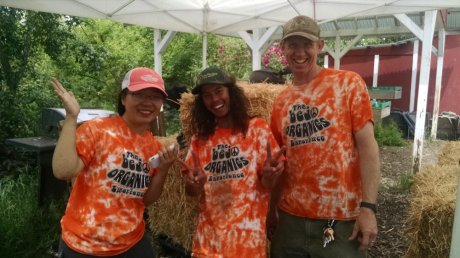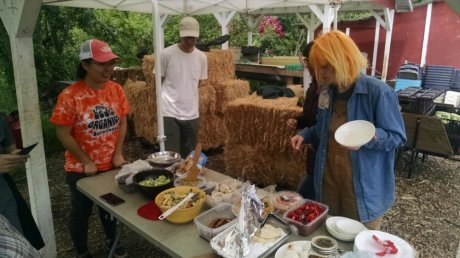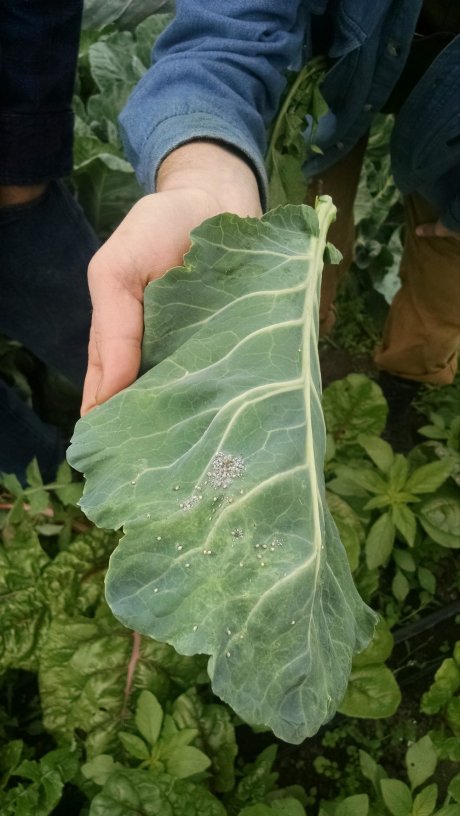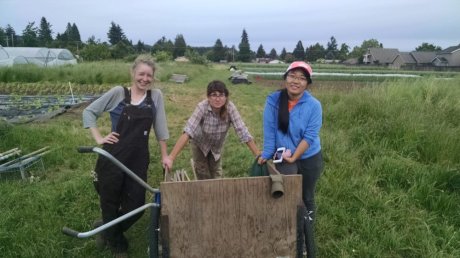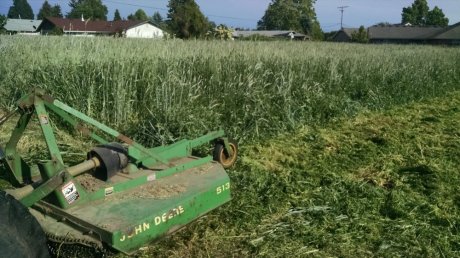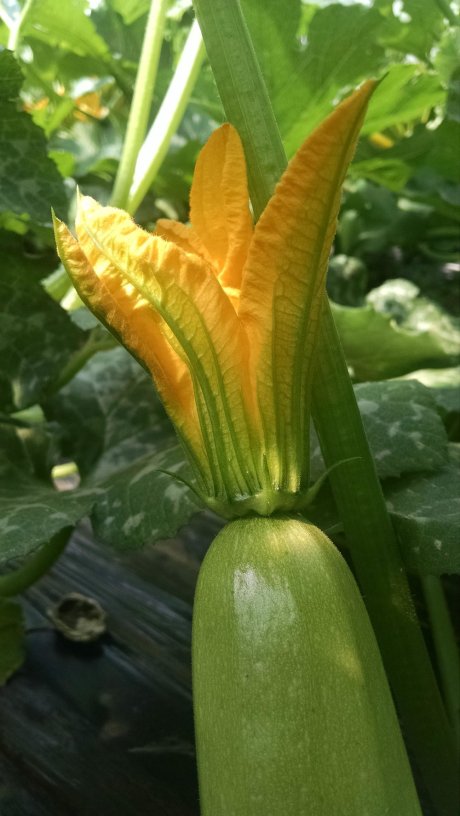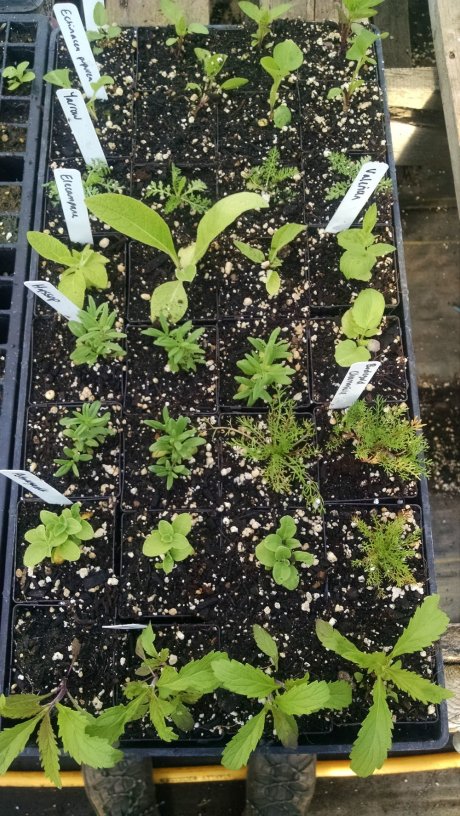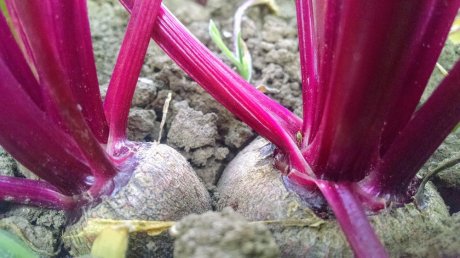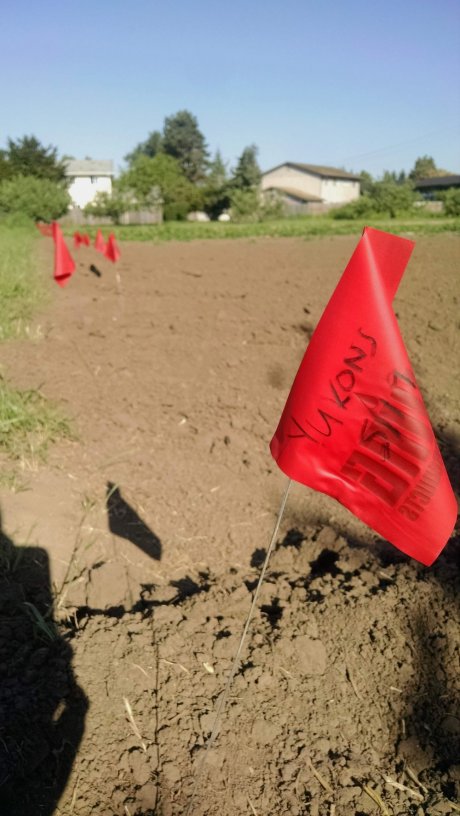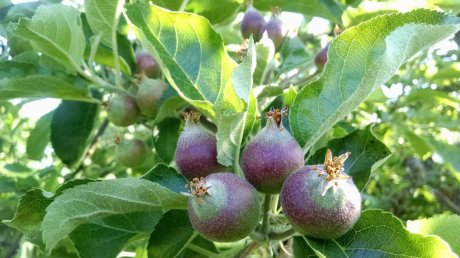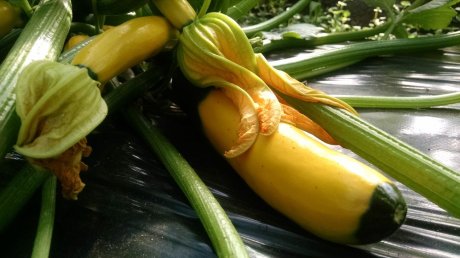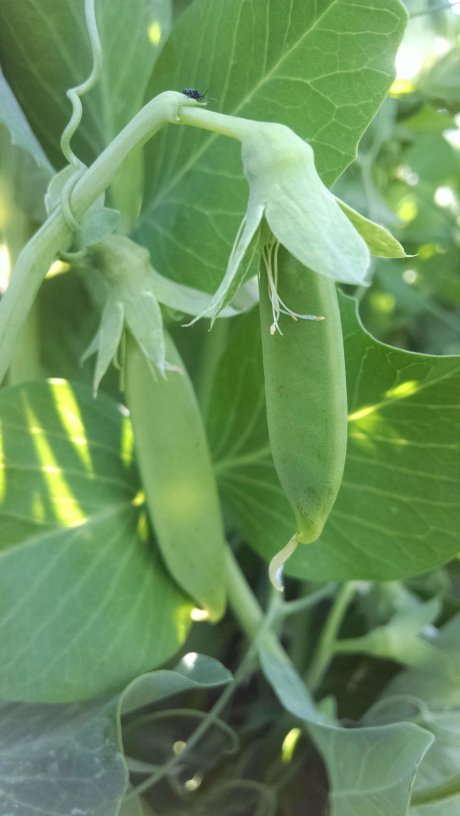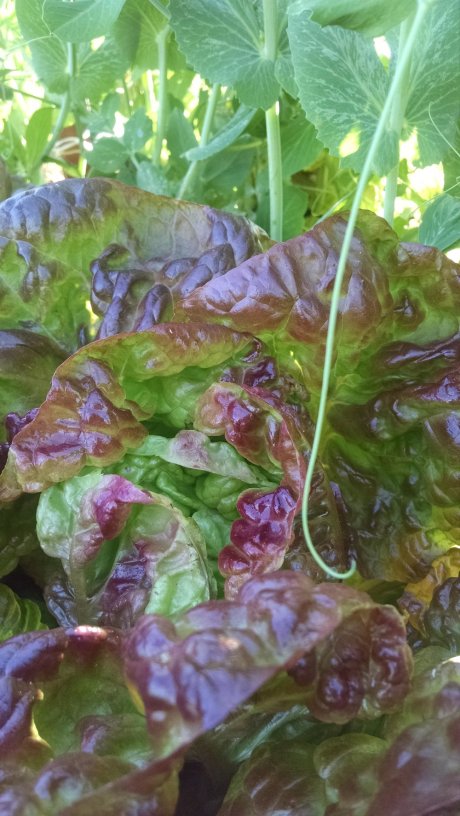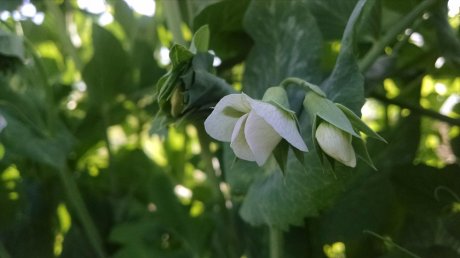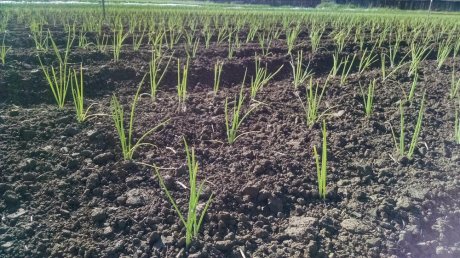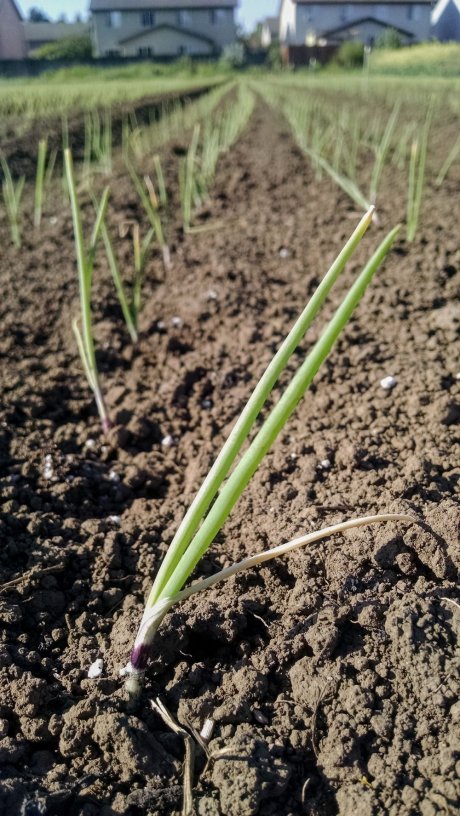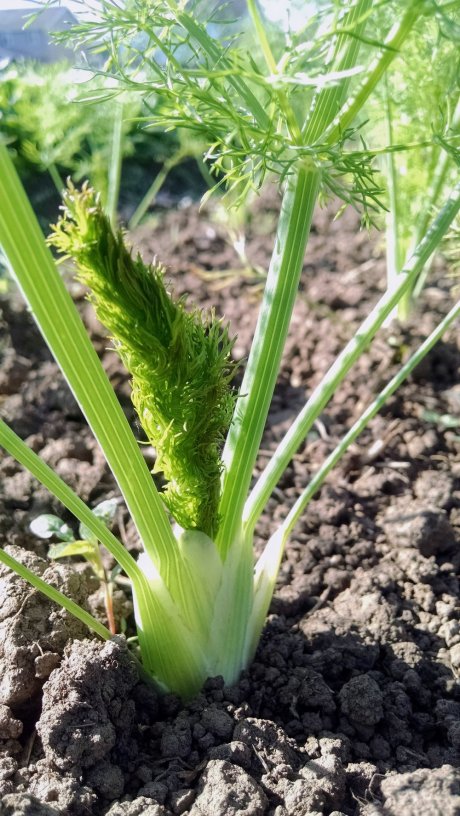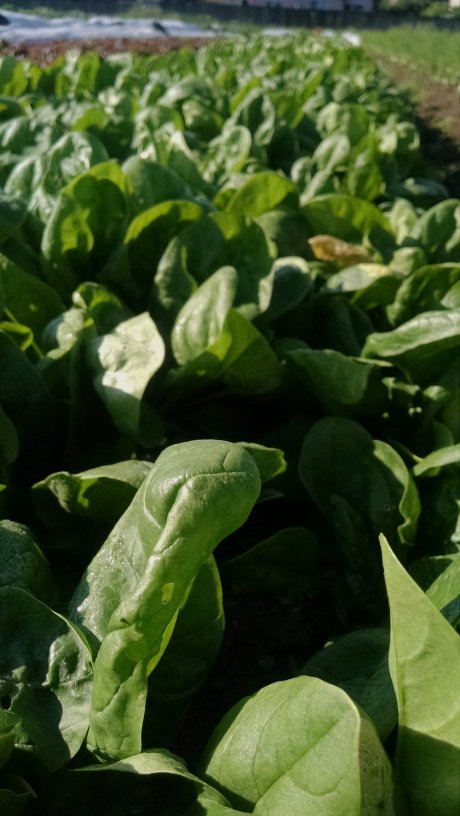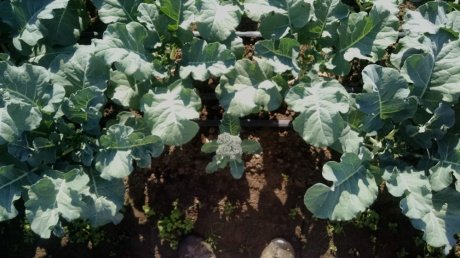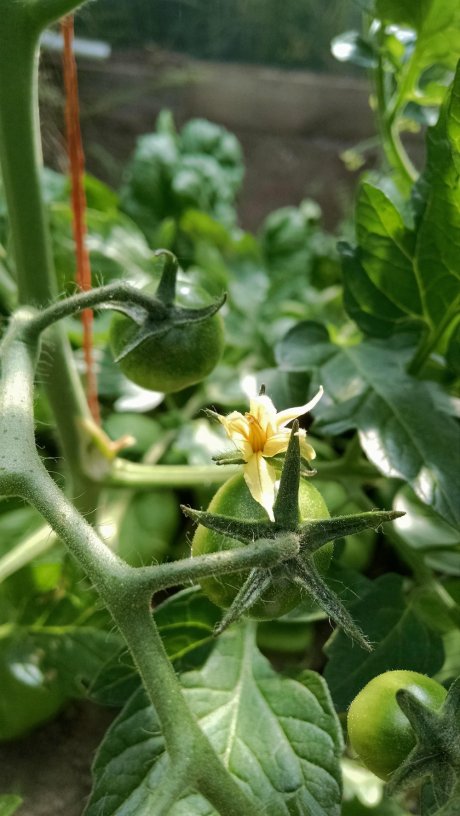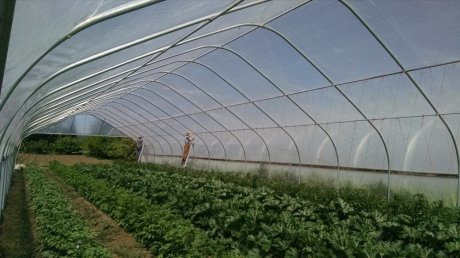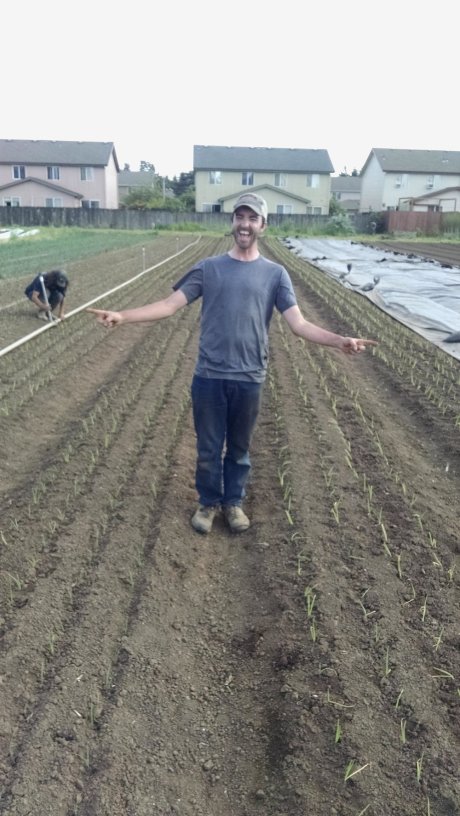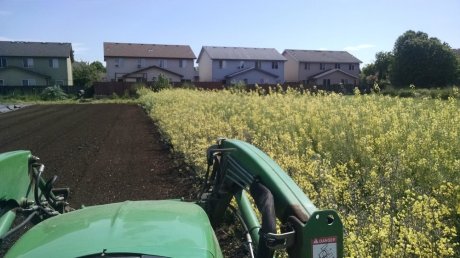They were born in February and March. Single, grass-like cotyledons springing up from the cold, moist potting soil in the nursery. Thousands of them, soft and supple, forming a carpet of growing tips that I used to run my hand over as I walked through the winter greenhouse to check on all the babes. I love the way they come out folded over– creased right in the middle of that single fine stem– and hang on to their black seed coats for a while, giving them a brief ride toward the scattered daylight.

Monocots first sprouting

Green onion clusters thickening with some stray seeds still riding their tips
They sat in the nursery for what seemed like months, adding thin hollow layers to their stems. Pointy leaf after pointy leaf shot straight up toward the sky as we assessed their germination rate, counted our losses, planted a few more trays of scallions, and waited.
Onions take their sweet time to grow.
The first four beds went in before our first plant sale in early April: the scallions, a couple beds of dry sets of Walla Wallas and Ailsa Craigs from Texas, and a bed of early seeded Walla Wallas from the farm. That was back when the rain gave us only a couple days at a time to work in the fields, and we ended up hysterical and coated in thick mud as we poked the last sets in the ground under a darkening sky. The remaining sixteen-or-so beds for the onion patch were waiting next to us, protected from the rain under a sea of plastic, to dry down enough to till and amend.

Michael and volunteers transplanting green onions

The future onion patch, staying just dry enough under plastic to till
Weeks passed. The plant sale caught us up for nearly a week, overwintered carrots and cauliflower flowed between our cold hands, and we potted up hundreds of peppers still cozy in the nursery. The onion field sat ready, and finally we unearthed it in late April, tilled it cleanly, tossed limestone and chicken pellets down its mounds, and ran over that chunk of earth now ready for transplants. The dozens of trays of onions, meanwhile, moved from the precious space of the main propagation house to the overflow nursery, where there was more space amongst the plant sale stock. We trimmed their tops to thicken their stems, weeded out the rogue sow thistles and pigweeds trying to overtake neighboring cells, and checked to make sure their plugs would pop out easily.

Onion beds awaiting soil amendments
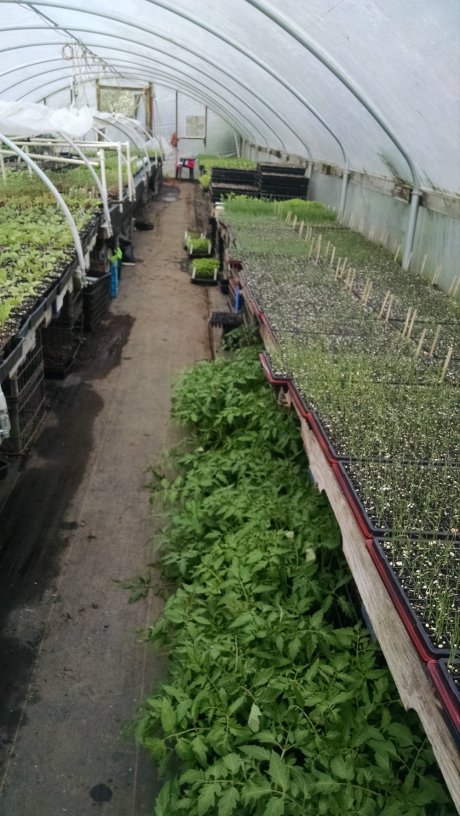
Onions kept their spot, tomatoes got booted to the ground
And finally, amidst another wave of chaos during our summer plant sale, pruning and trellising the jungle of tomatoes in the greenhouses, coordinating group after group of eager volunteers, and welcoming our new youth farmer crew, the onions found their home in the soil. First with the interns, then with UO Environmental Studies students, and finally with the new youth crew, we taught hand after hand to pull the plugs from the trays. Lay out the measuring stick, line up each plug, make sure there’s one or two plants on the line, plop plop plop, straight across the bed, chatting and laughing and standing to stretch, trying not to look down the row to see how far’s still left to go. It’s a long, tedious process to transplant onions. It feels less long and tedious when you’re doing it with good people.

Phil feeling triumphant after a long day plugging in onions
And then? Then, after already three months of weeding and watering and waiting?
Then we waited. We watered. We weeded. Again, and again, and again.

Onion pairs settling in to the field in late May

Red onion standing tall
Those four early beds that we planted in April started, predictably, to mature first. The farm stands and CSA had shifted my entire focus on the farm, from field and nursery work to harvest and processing. I was in it completely by the time the first fresh Walla Wallas came out of the ground in early July. They were stunning: ginormous white globes, shining and pungent in the midsummer light. They reminded me of pearls, hiding behind the roughage of old brown leaves and dirt up to their necks, emerging astoundingly flawless under our processing canopy, unveiled by newly trained hands.

Fresh Walla Walla onions at market
And then I practically forgot about them. Yes, we kept pulling out crates of green onions until they were gone. We mined for the biggest Wallas for weeks into months, cutting their tops off if they got floppy, peeling off more and more layers to expose that pristine inner glow.
Meanwhile, the sunflowers and corn came on. The greenhouse tomatoes hemorrhaged thousands of pounds of fruit until the field tomatoes started ripening, and then we were strapped to harvest. Beans, strawberries, cucumbers: a never-ending stream of abundance that felt both burdensome and dazzling every week. Feels both burdensome and dazzling, as each week blends with the next, summer vacations come and go, the youth crew starts back at school, and this land just keeps pumping out produce.
Meanwhile, the onions kept growing. And, despite three thorough clean-ups, so did the weeds. The onion patch became a forest of onion tops, then pigweed stalks, then thistle seeds, blowing fancifully away in the breeze. It became the area of the farm I’d shield my eyes from when I walked by. A quick glance at the progress of the onions– yes, some are bulbing up beautifully, and yes, a huge swath of the patch seems stunted from symphylans, or something– and just as quickly eyes averted from the weeds, as if they weren’t even there. Nothing to do, no way to tame it with the youth crew about to leave, so just don’t think about it. And good heavens, no photos!
Until this week.
This week, all those onions– growing ever-so-slowly in that plot for three and a half months, getting just about ready to die back and gear up for flowering next spring– they all got yanked. First the shallots, then the early reds, then the yellows, then back to a sea of big reds. A few volunteers, a few youth farmers who aren’t in high school full time, a cycle of crates and pallets and tractor, back and forth to the propagation house to cure. Ted and Michael drove the train as the motley crew pulled each onion out, one by one, into crates and onto pallets to be ferried away.
Did they get to say their goodbyes to all the microbes and worms hugging their roots?
Did they end up nestled in the prop-turned-curing house next to their long-time neighbors, or are they mixed up with strangers now?

The onion curing house
It’s easy to forget what they’ve been through. What we’ve all been through together, really, when peak harvest season approaches and there’s more food than ever on the farm, fewer trained people, less and less daylight. It’s easy to get consumed by the loads of potatoes and squashes yet to be harvested, the dozens of volunteer groups yet to be welcomed and trained, and the turning over of fields to the relief of winter cover crops. Even to get swept up by the need to trim and peel all these onions. Harvest, cure, trim, peel, sell. Done.
For a moment though, between teaching interns how to make sauerkraut and breaking down Thursday’s farm stand, turning on irrigation and cleaning up the day’s hubbub, I break away from that endless narrative, stand amongst these magnificent onions, and remember where they came from. It’s been a long, beautiful road. Wouldn’t you say?
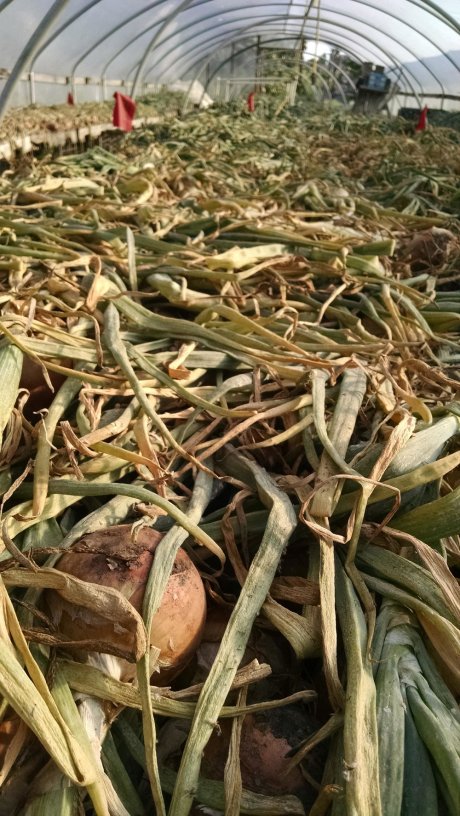
The onions begin to cure

